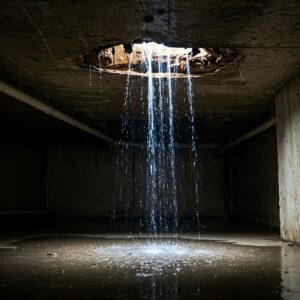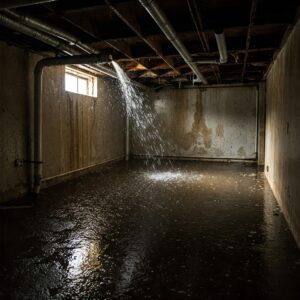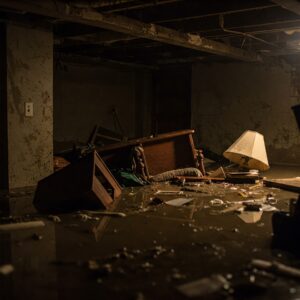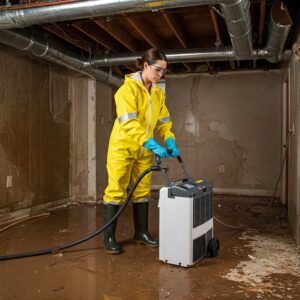In the water damage restoration industry, time is perpetually of the essence. When disaster strikes a property – whether a burst pipe, sewage backup, or storm flooding – the speed of response directly impacts the extent of the damage and the potential for successful restoration. For businesses operating in this high-stakes environment, securing a consistent, reliable flow of high-quality water damage restoration leads isn’t just advantageous; it’s the critical foundation upon which sustainable growth and operational success are built.

Simply having a phone that rings isn’t enough. The true challenge lies in attracting qualified prospects – homeowners or property managers genuinely facing water-related emergencies within your service area who require your specific expertise. Understanding the nuances of water damage lead generation, from identifying high-intent inquiries to implementing effective conversion strategies, is paramount. This exploration delves into the essential characteristics of valuable leads, proven methods for generating them, the role of specialized partners, and optimizing your processes to turn inquiries into loyal customers.
Defining High-Intent Water Restoration Leads: Quality Over Quantity
Not all water damage leads are created equal. A truly valuable lead possesses specific characteristics that indicate a high probability of converting into a profitable job. Moving beyond basic contact information, focus on identifying leads that demonstrate:
- Demonstrable Urgency: The prospect is actively seeking immediate assistance due to an ongoing or recent water intrusion event. They aren’t just casually browsing for future possibilities; they need help now. This often distinguishes emergency water mitigation leads from less urgent inquiries.
- Geographic Relevance: The property requiring service must fall squarely within your designated operational area. Leads from outside your service radius drain resources and lead to customer disappointment. Accurate targeting is crucial.
- Service Alignment: The reported issue should match the services your company provides. While some restoration leads might encompass mold or fire damage (and fire and water restoration leads are common after firefighting efforts), ensuring the primary need is water-related is key for a water damage specialist.
- Contact with Decision-Maker: Ideally, the lead provides direct contact information for the property owner or authorized manager who can approve the work, rather than a tenant or third party with no authority.
- Sufficient Information: Enough detail is provided to make an initial assessment of the situation’s potential scope and urgency.
Leads lacking these elements – perhaps someone researching prevention tips, located hundreds of miles away, or needing a service you don’t offer – consume valuable time and resources better spent on genuine opportunities. Effective lead qualification, whether performed internally or by a partner, is vital.
Proven Methods for How to Find Water Damage Leads
Generating a steady stream of qualified inquiries requires a multi-faceted approach. Relying on a single channel is often insufficient and risky. Successful water damage lead generation typically involves a blend of strategies:
Building a Strong Digital Foundation (Organic & Local Search)
In today’s market, your online presence is your digital storefront. Potential customers facing water emergencies overwhelmingly turn to search engines first.
- Website Optimization: Your site must be professional, easy to navigate (especially on mobile devices), load quickly, and clearly detail your services (including specific pages for water extraction, drying, sewage cleanup, etc.). Include clear calls-to-action and contact information.
- Local SEO Dominance: Optimizing your Google Business Profile (GBP) is non-negotiable. This includes accurate service areas, hours (highlight 24/7 availability), services offered, photos, and actively soliciting and responding to reviews. Consistent NAP (Name, Address, Phone Number) information across relevant online directories (local citations) also boosts visibility.
- Helpful Content Marketing: Creating informative blog posts or resource pages answering common questions (e.g., “What to do immediately after a flood,” “Signs of hidden water damage,” “Navigating insurance claims for water damage”) can attract organic traffic from individuals researching related problems, positioning your company as a knowledgeable authority and generating valuable restoration leads over time.
Strategic Alliances and Powerful Referral Networks
Trust remains a powerful currency. Building strong relationships with complementary professionals can yield highly valuable, often pre-qualified leads.
- Key Referral Partners: Plumbers are often the first call for leaks. Roofers deal with storm damage intrusions. HVAC technicians find leaks in AC units or drain lines. Insurance agents and adjusters handle claims resulting from water damage. Property managers oversee multiple units where issues can arise.
- Nurturing Relationships: This isn’t a passive strategy. It requires active networking, mutual respect, and potentially referral agreements. Providing excellent service to their referred clients reinforces the relationship. These networks are prime sources for direct water damage leads and complex fire and water restoration leads.
Targeted Paid Advertising Channels
Paid advertising offers immediacy and precise targeting capabilities, essential for capturing prospects at their moment of need.
- Search Engine Marketing (PPC): Platforms like Google Ads allow you to bid on specific keywords (water damage restoration leads, “emergency water removal,” water mitigation leads, etc.) and target ads geographically with pinpoint accuracy. Well-managed PPC campaigns can deliver immediate results, often operating on a cost-per-click or impression basis, which relates closely to the concept of pay per lead water damage in terms of calculating acquisition cost.
- Social Media Advertising: While often better for brand building than immediate emergency response leads, platforms like Facebook allow targeting based on demographics, location, and even behaviors that might indicate homeownership or recent moves, potentially reaching prospects needing restoration services.
Leveraging Online Directories and Home Service Marketplaces
Maintaining a presence on relevant online platforms can increase visibility.
- Industry Directories: Listings on sites relevant to the restoration industry (like the IICRC locator) add credibility.
- Home Service Platforms: Services like Angi or Thumbtack can generate leads, but often these are shared among multiple contractors, increasing competition, and might not even be targeted to your specific services and/or location.
Partnering with Water Damage Lead Generation Companies: Pros and Cons
For many restoration businesses, outsourcing lead generation to specialized companies offers significant advantages, freeing up internal resources to focus on operations and service delivery. However, it requires careful consideration.
Advantages of Specialization
- Marketing Expertise: Water damage lead generation companies live and breathe digital marketing specifically for the restoration niche. They understand keyword nuances, effective ad copy, and conversion optimization techniques better than most generalists.
- Advanced Technology & Targeting: Reputable providers utilize sophisticated tools for targeting, tracking, and qualifying leads, often exceeding the capabilities of an in-house setup.
- Time and Resource Savings: Outsourcing eliminates the need to hire, train, and manage an internal marketing team or dedicate the owner’s valuable time to complex campaign management.
- Scalability: Easily adjust lead volume based on your capacity by communicating with your provider.
- Qualification Processes: Many companies filter inquiries, verifying location, need, and contact information before passing the lead to you, improving the quality of prospects you engage with.
Potential Considerations and Drawbacks
- Cost Structure: Most operate on a pay per lead water damage model or a similar performance-based structure. It’s crucial to understand the cost per lead and calculate the expected Return on Investment (ROI).
- Lead Quality Consistency: Not all providers are equal. Some may use tactics that generate quantity over quality. Thorough vetting is essential. Ask about their lead sources and qualification methods.
- Exclusivity Matters: Clarify whether leads are exclusive (sold only to you) or shared (sold to multiple contractors). Exclusive leads significantly increase your chances of winning the job but typically cost more.
- Contractual Obligations: Understand the terms of service, contract length (if any), lead return policies for invalid leads, and payment terms before committing.
Evaluating Providers (Including Real Time Lead Gen’s Approach)
When vetting water damage lead generation companies, ask pointed questions: Where do your leads come from? How do you qualify them? Are they exclusive? What is your policy for bad leads? What is the pricing model? Reputable companies will be transparent. Consider providers like Real Time Lead Gen, which emphasizes delivering high-intent leads promptly, often via direct phone transfers, recognizing the critical need for speed in this industry. Their focus aligns with providing actionable opportunities rather than just raw data.

Comparing Lead Acquisition Models: Beyond Just “Free Water Damage Leads”
While the idea of free water damage leads is appealing, relying solely on methods perceived as free (like basic directory listings or passively waiting for organic SEO results) is rarely a viable strategy for growth. These methods often lack consistency, volume, and quality, demanding significant indirect investment (time, effort) for minimal return.
A strategic approach usually involves blending methods and understanding different acquisition models:
- Pay Per Lead: Paying a set fee for each qualified lead (contact information/details). Common model for lead generation companies and some directory services.
- Pay Per Call: Paying for qualified phone calls generated through tracking numbers. Excellent for capturing high-intent prospects seeking immediate contact.
- Exclusive Leads: Paying a premium for leads sent only to your business, reducing direct competition.
- In-House Generation: Investing in your own marketing team/efforts (SEO, PPC management, content creation). Offers maximum control but requires significant resources and expertise.
From Lead to Loyal Customer: Maximizing Conversion Rates
Generating water damage restoration leads is only half the battle. Converting those leads into jobs requires operational excellence:
The Indisputable Need for Speed
In water damage, minutes matter. Aim to respond to inquiries – whether phone calls or web forms – virtually instantaneously, 24/7/365. Delayed responses often mean the prospect has already called a competitor.
Communication is Key
Train your intake staff and technicians to communicate with empathy, professionalism, and clarity. Listen to the customer’s concerns, explain the restoration process clearly, detail the next steps, and manage expectations regarding timelines and insurance processes.
Seamless Internal Handoff
Ensure a smooth transition from the initial contact (inhouse phone operator or a HIGH QUALITY call answering service) to the dispatch of an assessment team or technician. Dropped calls or internal confusion lose jobs.
Persistent Follow-Up
Not every lead converts on the first contact. Implement a system for appropriately following up on viable leads that didn’t immediately schedule service, perhaps offering additional information or checking back after they’ve spoken with their insurance.
Assess your current lead generation strategy and consider professional partnerships for growth. But the evaluation doesn’t stop once a strategy is implemented. Sustained success in securing profitable water damage restoration leads hinges on continuous measurement, insightful analysis, and agile adaptation to ever-changing market dynamics. Understanding the true return on your marketing investments and knowing how to navigate fluctuations in demand are crucial next steps.
Measuring True Success: Calculating ROI for Water Damage Lead Generation
Simply tracking the number of incoming leads or even the basic Cost Per Lead (CPL) provides an incomplete picture. To truly understand the effectiveness of your efforts – whether from SEO, PPC, referral programs, or partnerships with water damage lead generation companies – you need to delve deeper into metrics that reflect profitability and efficiency.
Key Performance Indicators (KPIs) to Track Diligently
- Cost Per Lead (CPL) by Source: Calculate this individually for each channel (e.g., Google Ads CPL, Real Time Lead Gen CPL, estimated SEO CPL based on investment, cost per referral acquired). This reveals which sources deliver inquiries most cost-effectively at the initial stage.
- Lead-to-Appointment Rate: What percentage of leads result in a scheduled assessment or inspection? A low rate might indicate poor lead quality from a specific source or issues with your intake process.
- Appointment-to-Job Conversion Rate: Of the assessments conducted, what percentage turn into actual booked jobs? This reflects the quality of the lead post-assessment and the effectiveness of your estimators or technicians in closing the deal.
- Average Job Value (AJV) by Source: Calculate the average revenue generated from jobs originating from each lead source. This is critical – a source with a slightly higher CPL might be far more valuable if it consistently delivers larger jobs (e.g., significant commercial water damage leads vs. minor residential ones).
- Customer Acquisition Cost (CAC): This is the ultimate measure of how much it costs to acquire a paying customer. Calculate it per source:
CAC = CPL / (Lead-to-Appointment Rate * Appointment-to-Job Conversion Rate). A lower CAC generally indicates higher efficiency. - Return on Investment (ROI): The gold standard for measuring profitability. For each channel:
ROI = ((Total Revenue from Leads via Channel - Total Cost of Leads via Channel) / Total Cost of Leads via Channel) * 100%. This tells you how much profit you’re generating for every dollar spent on that specific channel. Models like pay per lead water damage require careful ROI tracking.
Why Average Job Value is a Critical Differentiator
Focusing solely on minimizing CPL can be misleading. Imagine Source A provides leads at $100 CPL with an AJV of $2,500, while Source B provides leads at $150 CPL but with an AJV of $5,000. Despite the higher initial cost per lead, Source B is likely delivering significantly better overall value and profitability. Analyzing AJV alongside CPL provides a much clearer picture of true performance.
The Indispensable Role of Tracking Tools and Techniques
Accurate measurement requires robust tracking. Implementing a Customer Relationship Management (CRM) system is highly recommended to log lead details, track interactions, and attribute closed jobs back to their original source. Unique call tracking numbers for different campaigns (PPC ads, website, specific partners) are essential for accurately monitoring phone leads. Consistent data entry by your entire team is crucial for reliable analysis.

Navigating the Ebb and Flow: Managing Lead Volume Fluctuations
The demand for water damage restoration leads isn’t always constant. It’s subject to seasonality, weather events, and local economic factors. Successfully managing these peaks and troughs is key to maintaining profitability and operational stability.
Understanding Seasonality and Catastrophic Events
Recognize patterns in your service area. Heavy rain seasons, hurricane threats, or periods of deep freezes leading to burst pipes often create predictable surges in demand. Major localized flooding or storms can cause sudden, unpredictable spikes. Conversely, certain times of the year might traditionally be slower.
Strategies for Effectively Scaling Up During Peak Demand
- Increase Marketing Spend: Allocate higher budgets to PPC campaigns during anticipated busy periods. Ensure keywords and bids are optimized for maximum visibility when search volume spikes.
- Boost Lead Orders: Communicate with your lead generation partners, like Real Time Lead Gen, to increase your lead volume capacity. Reliable providers should have mechanisms to scale delivery.
- Confirm Operational Readiness: Crucially, ensure you have the staff, vehicles, and equipment (dehumidifiers, air movers) available to handle the increased job volume. Generating leads you can’t service damages your reputation.
Strategies for Productively Managing Slowdowns
- Invest in Long-Term Assets: Use quieter periods to focus on SEO improvements, website updates, creating helpful content, or advanced technician training – investments that pay off later.
- Proactive Outreach & Maintenance: Consider offering related maintenance services (e.g., sump pump inspections, crawl space checks) or running targeted promotions during slower months.
- Nurture Referral Relationships: Dedicate extra time to strengthening connections with plumbers, insurance agents, and other referral sources.
- Optimize Spending: Review marketing budgets. You might temporarily reduce ad spend or lead orders, but avoid shutting off channels completely to maintain a baseline presence.
The Strategic Importance of Flexibility
Adaptability is crucial. Your lead generation strategy shouldn’t be rigidly fixed. Utilize flexible arrangements where possible, such as pay-per-lead models or month-to-month agreements with water damage lead generation companies, allowing you to adjust investment levels more easily based on real-time demand and performance data.

Conclusion: Strategize for Consistent Restoration Success
A predictable pipeline of high-quality water damage restoration leads is the engine driving growth for restoration contractors. Success requires moving beyond passive hope or chasing elusive free water damage leads. It demands a strategic, multi-channel approach encompassing a strong digital presence, valuable referral partnerships, potentially targeted paid advertising, and optimized internal processes.
Understanding how to find water damage leads involves evaluating various methods, from robust SEO and local search optimization to considering partnerships with specialized water damage lead generation companies. Companies like Real Time Lead Gen can offer expertise and technology to deliver qualified prospects efficiently. Ultimately, the most effective water damage lead generation strategy integrates diverse tactics, focuses relentlessly on lead quality, prioritizes rapid response, and continuously measures results to refine the approach. Assess your current lead flow, identify areas for improvement, and invest wisely to ensure your restoration business thrives.
Securing a dominant position in the water damage restoration market is an ongoing marathon, not a sprint. The landscape of water damage lead generation constantly evolves with search engine algorithms, competitor actions, and changing consumer behavior. By committing to rigorous tracking, insightful analysis of your KPIs, understanding the nuances of ROI, and maintaining the flexibility to adapt to market fluctuations, you can build a truly resilient and profitable restoration business poised for long-term success.
Send us an email or give us a call or text to start enjoying exclusive, real time, high quality restoration leads for your business.
Thanks
Justin
justin@realtimeleadgen.com

